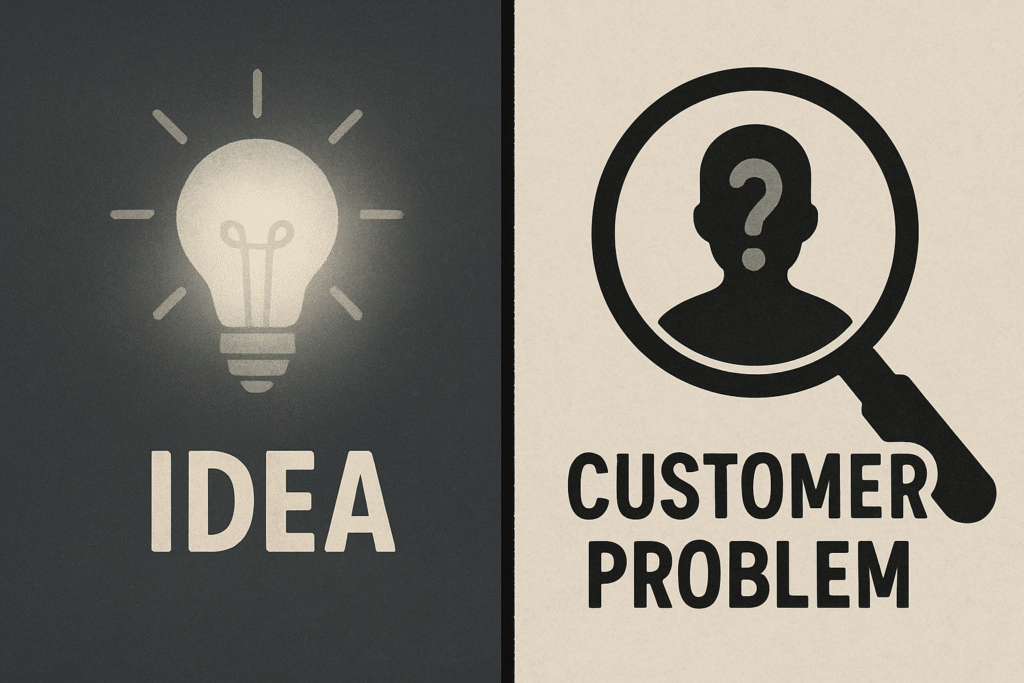The journey from a groundbreaking startup idea to a successful Initial Public Offering (IPO) is rarely a straight line. It’s a winding path filled with pivots, learning curves, and crucial decisions that can either propel your venture forward or lead to its premature demise. In our ongoing “Idea to IPO” series, we’ve previously explored the foundational steps of identifying a compelling business idea and conducting thorough market research. Now, in this crucial third installment, we delve into a powerful methodology that has revolutionized how startups approach product development and market entry: The Lean Startup method and the pivotal role of the Minimum Viable Product (MVP).
Embracing Uncertainty: The Core Principles of Lean Startup
Traditional product development often involves extensive planning, feature-rich launches, and significant upfront investment. While seemingly thorough, this approach carries a considerable risk. What if the market doesn’t respond as expected? What if core assumptions about customer needs are incorrect? The Lean Startup method, popularized by Eric Ries in his seminal book, offers a more agile and risk-mitigating alternative. It’s built on the fundamental idea that startups operate under extreme uncertainty and that the most effective way to navigate this uncertainty is through validated learning.
At its core, the Lean Startup methodology revolves around a continuous Build-Measure-Learn feedback loop. This iterative process emphasizes:
- Building a Minimum Viable Product (MVP): Instead of striving for a perfect, feature-complete product from the outset, the Lean Startup advocates for launching a version with just enough core functionality to attract early adopters and validate key hypotheses.
- Measuring Customer Response: Once the MVP is in the hands of real users, the focus shifts to rigorously measuring their behavior and gathering both quantitative and qualitative feedback.
- Learning and Iterating: The insights gleaned from measurement inform the next cycle of building. Startups either persevere by refining their current path or pivot by making significant changes to their product or business model based on what they’ve learned.
This cyclical approach allows startups to minimize waste (in terms of time, resources, and effort) and maximize their chances of building a product that customers truly want and need. It’s about moving quickly, testing assumptions rigorously, and adapting based on real-world data rather than relying on guesswork or intuition alone.
Why a Full-Fledged Product Launch Can Be a Risky Proposition
Consider the traditional approach: months, even years, spent in stealth mode, meticulously crafting a product with a long list of features. This can lead to several critical pitfalls:
- Building Something Nobody Wants: The biggest risk is investing significant resources into a product that the market ultimately rejects. Without early feedback, you’re operating in a vacuum, potentially solving a problem that doesn’t exist or offering a solution that doesn’t resonate with your target audience.
- Delayed Time to Market: The longer it takes to launch, the greater the risk of competitors entering the space or market needs shifting. A lengthy development cycle can leave you playing catch-up or missing crucial market windows.
- High Burn Rate: Extensive upfront development often requires significant capital expenditure. If the product fails to gain traction, the high burn rate can quickly deplete your resources, leaving you with little opportunity to adapt or try a different approach.
- Missed Learning Opportunities: By delaying interaction with real users, you miss out on invaluable feedback that could shape your product in crucial ways. Early user insights can uncover unforeseen problems, highlight unexpected use cases, and guide the development of features that truly matter.
The Power of the Minimum Viable Product (MVP)
The MVP is the antidote to these risks. It’s not a half-baked product or a low-quality prototype. Instead, it’s a version of your product with just enough features to be usable by early customers who have a real problem that your product addresses. The primary goal of the MVP is to validate your core assumptions about your business model and gather validated learning with the least amount of effort and resources.
Think of it this way: instead of spending years building a full-fledged car, you might start with a scooter to test if there’s a demand for personal transportation in a specific urban environment like [mention a relevant area in Navi Mumbai or a similar Indian city]. The scooter isn’t the final product, but it allows you to test fundamental assumptions about user needs, pricing, and potential challenges.
Key Characteristics of an Effective MVP
Building a successful MVP requires careful consideration. It’s not about launching the bare minimum; it’s about launching the right minimum. Here are some key characteristics of an effective MVP:
- Solves a Core Problem: The MVP should address a significant pain point for your target audience. It should offer a clear and compelling value proposition, even in its limited form.
- Functional and Usable: While not feature-rich, the MVP must be functional and provide a reasonably good user experience. It shouldn’t be buggy or so difficult to use that it frustrates early adopters.
- Sufficient Value for Early Adopters: Early adopters are willing to tolerate imperfections in exchange for being among the first to experience a potential solution to their problem. The MVP must offer enough value to attract these initial users.
- Enables Validated Learning: The MVP should be designed to allow you to test your key hypotheses about your business model, such as customer acquisition channels, pricing strategies, and core product features.
- Measurable: You need to be able to track key metrics related to user behavior and gather feedback effectively. This data is crucial for informing your next steps.
Steps to Building Your Minimum Viable Product
Building an effective MVP involves a structured approach:
- Identify Your Core Hypotheses: What are the most critical assumptions you’re making about your business idea? These could relate to the problem you’re solving, your target customer, your proposed solution, or your revenue model. For example, a startup in [mention a relevant industry in India, e.g., online grocery delivery in Navi Mumbai] might hypothesize that busy working professionals are willing to pay a premium for same-day grocery delivery.
- Define Your Target Audience: Who are your ideal early adopters? These are the individuals who are most likely to experience the problem you’re solving and are actively seeking a solution. Understanding their needs, behaviors, and pain points is crucial for building an MVP that resonates with them.
- Prioritize Features: Based on your core hypotheses and understanding of your target audience, identify the absolute minimum set of features required to deliver value and test your assumptions. Focus on the core functionality that addresses the most critical problem. Avoid the temptation to add “nice-to-have” features at this stage. Think about the single most important job your product needs to do for your early users.
- Design the User Experience: Even with limited features, the MVP should offer a clear and intuitive user experience. Focus on the core user flows and ensure they are as smooth and efficient as possible. A poor user experience can deter early adopters, even if the underlying value proposition is strong.
- Build the MVP: Develop the MVP with a focus on speed and efficiency. Choose technologies and development approaches that allow you to get to market quickly without compromising on essential functionality and usability. Consider using no-code or low-code tools if appropriate to accelerate the development process.
- Establish Measurement Metrics: Before launching your MVP, define the key metrics you will track to assess its performance and validate your hypotheses. These metrics might include user sign-ups, feature usage, conversion rates, customer engagement, and feedback collected through surveys or interviews.
Testing and Iterating Based on Feedback
Once your MVP is launched, the real learning begins. The focus now shifts to gathering data, analyzing user behavior, and collecting feedback. This is where the “Measure” and “Learn” phases of the Lean Startup loop come into play.
- Implement Robust Tracking: Ensure you have the necessary tools and processes in place to track the metrics you defined earlier. This could involve using analytics platforms, setting up feedback forms, and conducting user interviews.
- Collect Qualitative Feedback: While quantitative data provides valuable insights into user behavior, qualitative feedback from interviews and open-ended surveys can reveal the “why” behind the numbers. Talk to your early adopters, understand their experiences, and identify their pain points and unmet needs.
- Analyze the Data: Regularly review the data you’ve collected and look for patterns and trends. Are users engaging with the core features as expected? Are they encountering any significant usability issues? Is your value proposition resonating with them?
- Learn and Decide: Based on your analysis, draw clear conclusions about your initial hypotheses. Are they being validated? Or is the data suggesting that you need to rethink your approach? This is where you make the crucial decisions to either persevere with your current direction or pivot to a new one.
Perseverance vs. Pivot: Making Informed Decisions
The Lean Startup method acknowledges that not every initial idea will be a resounding success. The key is to recognize when your assumptions are not being validated and to be willing to adapt.
- Persevere: If the data suggests that you are on the right track, even if initial traction is slow, you might choose to persevere. This could involve refining existing features, optimizing the user experience, or focusing on targeted marketing efforts.
- Pivot: If the data consistently indicates that your core assumptions are incorrect, it might be time to pivot. A pivot involves making a fundamental change to your product, target audience, or business model based on what you’ve learned. There are various types of pivots, such as a customer segment pivot, a feature pivot, or a technology pivot. The goal of a pivot is to leverage the knowledge you’ve gained to move in a more promising direction.
Scaling Based on Validated Learning
Once you have validated your core assumptions and have a product that resonates with your target audience, you can begin to think about scaling. However, even during the scaling phase, the Lean Startup principles remain relevant. Continue to measure, learn, and iterate as you grow your customer base and expand your product offerings.
Internal and External Linkages for Further Exploration
To deepen your understanding of the concepts discussed in this article, we encourage you to explore the following resources:
Internal Links (within the Idea to IPO Series):
- Part 1: Identifying a Compelling Business Idea: [Insert Link Here Once Published] – Revisiting the initial stages of idea generation and validation.
- Part 2: The Importance of Thorough Market Research: [Insert Link Here Once Published] – Understanding your target market and competitive landscape.
- Part 4: [Next Topic in the Series]: [Insert Link Here Once Published] – Continuing the journey towards IPO readiness.
External Links (authoritative resources on Lean Startup):
- The Lean Startup by Eric Ries: [Link to the book on a relevant platform like Amazon or Flipkart] – The foundational text on the Lean Startup methodology.
- Lean Startup Co.: [Link to leanstartup.co] – The official website of the Lean Startup movement, offering resources, articles, and events.
- Steve Blank’s Resources: [Link to Steve Blank’s website or relevant articles] – Insights from another pioneer of the Lean Startup movement and customer development.
Conclusion: Embrace the Lean Approach for Faster Market Entry
In today’s rapidly evolving business landscape, agility and adaptability are paramount. The Lean Startup method, with its emphasis on building a Minimum Viable Product and embracing validated learning, provides a powerful framework for startups in [mention the relevant ecosystem in India, e.g., the burgeoning tech scene in Navi Mumbai and across India] to navigate uncertainty, minimize risk, and reach the market faster with products that truly meet customer needs. By focusing on building iteratively, measuring results rigorously, and learning from feedback continuously, you can significantly increase your chances of success on the journey from a promising idea to a thriving enterprise, and ultimately, perhaps, to an IPO. Remember, the goal isn’t to build a perfect product from day one, but to embark on a journey of continuous discovery and improvement, guided by the voice of your customers.


